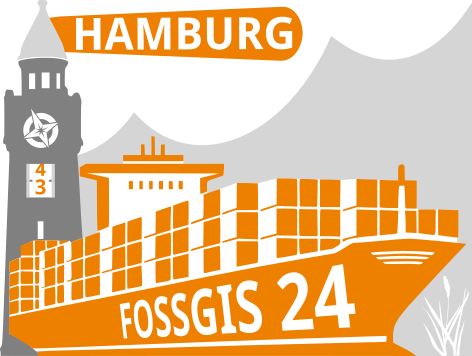Open Source and Web-Based GeoAI tool for Transparent Forest Fire Prediction
Qasem Safariallahkheili and Sebastian Meier
Utilizing open geospatial data and AI, we are trying to predict forest fire susceptibility in Brandenburg. This case study showcases full-stack web-GIS, emphasizing user interaction and transparent AI through open-source tools like GEE, GDAL, Python, Maplibre, and TiTiler.
The advancement of AI algorithms has led to their widespread adoption in Geographic Information Science (GIS) applications, encompassing areas such as natural and humanitarian crises, location-based services, and urban planning, collectively referred to as GeoAI. Given the inherent opacity of AI systems, their integration in decision-making processes necessitates a degree of transparency and explainability.
We address the imperative of eXplainable AI (XAI) within web-based GIS applications. To this end, we present a case study focused on forest fire susceptibility in the state of Brandenburg, Germany. Leveraging open remote-sensing data, alongside established open-source geospatial tools like Google Earth Engine (GEE) and GDAL, we undertook the aggregation and preprocessing of satellite imagery. This process was complemented by Python for model training, TiTiler for raster tile service, and a frontend application developed with Vue.js and Maplibre GL JS for user interaction and map rendering. For the vital aspect of explainability, we employed the SHAP (SHapley Additive exPlanations) Python library to quantify the influence and contribution of each predictor at user-specified locations to provide an explanation of why the AI model made a certain prediction at a specific geographical location.
In this pursuit, we considered three primary categories of factors: topographic attributes (Elevation, Aspect, and Slope), meteorological variables (Global Radiation, Land Surface Temperature, Precipitation, and Drought Index), and vegetation indices (NDVI, NDMI, GNDMI, and Land Cover). Historical wildfire incident data spanning from 2013 to 2023 served as the inventory dataset derived from MODIS. NDVI, NDMI, and GNDMI metrics were derived from Sentinel-2 imagery utilizing GEE, while GDAL was employed for necessary calculations based on relevant bands. Topographic and meteorological data sets were sourced from OpenDEM and Deutscher Wetterdienst (DWD), respectively, and underwent preprocessing via GDAL and associated utility tools. This encompassed image format conversion, re-projection, mosaicking, and image classification using gdal_translate, gdalwrap, and gdal_calc.py.
The combination of these processed inputs, using Python's Geopandas, resulted in distinct training and testing datasets. The Random Forest algorithm was selected to train the prediction model.
Subsequently, the resulting fire susceptibility map underwent processing in TiTiler to create map tiles and a Cloud Optimized GeoTIFF (COG) file. The generated map was seamlessly integrated into the frontend application, enhancing user interaction.
For enhanced interpretability and interaction with the AI model, an API was developed. It accepts pixel coordinates of selected fire susceptibility values from the front-end leveraging the SHAP Python package to quantify the significance and contribution of each predictor. These insights are then presented in the frontend interface, ensuring a comprehensive and accessible user experience.
